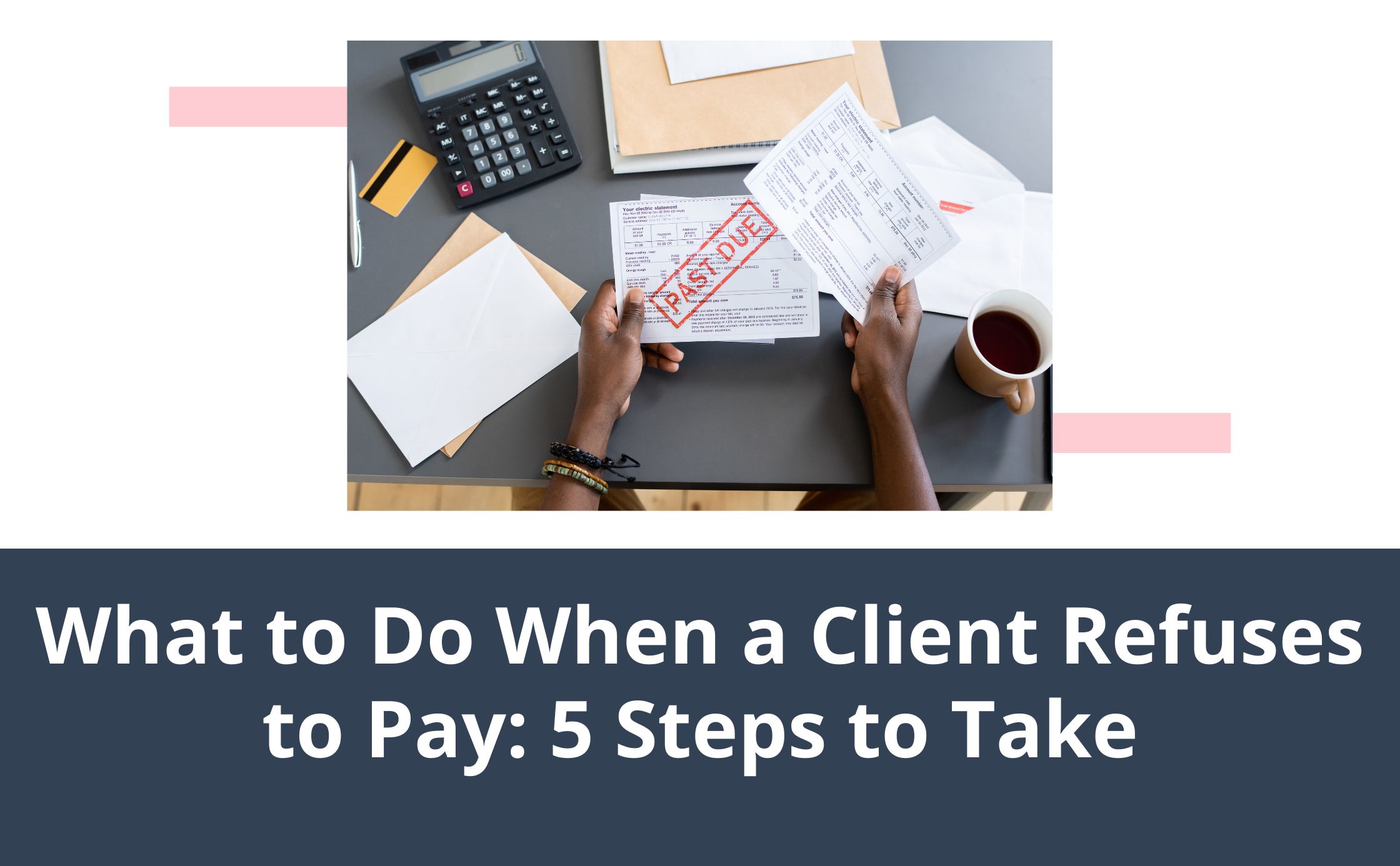Are you struggling to get clients to pay invoices for services your team has already completed? Are you sending constant follow-ups to your clients, and not getting any replies? You aren’t alone.
No matter how established your business is, you’re still going to get a few clients who refuse to pay for your products or services. Before you panic, there are steps you can take to deal with unsatisfied customers and ensure you’re paid for the services you provide.
Whether you own an HVAC company, a plumbing business, or a local salon, here’s what to do when a client doesn’t pay.
5 Steps To Take When a Client Doesn’t Pay
Dealing with late payments or non-payments can be challenging for small businesses. If an invoice is 30 or 60 days past due, here are five steps you’ll need to take to resolve the issue:
Step One: Speak with Unsatisfied Client
If the client is unsatisfied with your services and refuses to pay the invoice, you’ll want to schedule some time to discuss their experience. During the conversation, it’s important to stay calm and actively listen to their concerns. If your business is at fault, you’ll want to apologize to the customer and show them empathy for the situation. Depending on who is at fault for the issue, you may want to offer them a discount on the invoice.
The way you handle these conversations will have a positive or negative effect on your business. Always be kind, reasonable, and understanding.
Step Two: Send an Email Follow-up
If you send an invoice and a client doesn’t pay it on time, send them a friendly follow-up. The follow-up should be an email reminding them they have an overdue invoice that needs to be paid.
In some cases, your customer may have forgotten they had an invoice open and needed that extra follow-up. If you don’t receive payment, follow up again in one to two weeks. If the client is ignoring your follow-ups, you may need to send an updated invoice or add on late fees if necessary.
Step Three: Schedule a Phone Call
If the client won’t reply to any of your emails, you may need to pick up the phone and call them. You should try to get to the root of the problem and ask them why they haven’t paid before jumping to conclusions. If the client is going through financial struggles, try to find a solution that works for both parties. You can break the payment into smaller payments or offer them more time to pay.
To ensure you get the money you deserve, you’ll need to go into the call with an open mind and be as personable as possible. Remember to be open-minded and understanding. The way your team approaches these situations will have a reflection on your company’s reputation. To avoid negative reviews or testimonials, you’ll want to remain calm and be as understanding as possible.
Step Four: Send Them to Collections
No small business ever wants to send its client to collections. But in some cases, it’s the only option available. If you’re struggling to get an invoice paid, consider working with an outside debt agency to collect payment.
Sending your clients to collections should always be a last resort. You should try to call, email, or book an appointment with the client before sending them to collections. Debt agencies typically use aggressive tactics to get invoices paid, which might not align with your company’s morals.
Step Five: Is it Worth It?
Before sending a client to collections, consider the size of the invoice and whether working with a debt agency is worth the trouble. If the client is sent to collections, they may leave a bad review about your business, which can tarnish your local reputation. This can inevitably push leads and prospects to explore your competitors. If it’s a small amount, you may want to cut your losses to maintain your reputation.
3 Tips for Streamlining Payments
Optimizing your approach to payments is the most effective way to ensure every invoice is paid on time. Here are three tips for improving your processes:
- Automated Follow-ups: Instead of sending each follow-up individually, invest in a payment tool that automatically follows up after 30 or 60 days past due. This will streamline communication and ensure you never miss a touch point.
- Consider Payment Plans: For bigger invoices, consider accepting payment plans. This will break down bigger invoices into smaller, more manageable payments. Offering these types of payment options can also make your services more affordable for your clients, which can improve your reputation.
- Accept Online Payments: If you only accept wire transfers or checks, chasing payments can be challenging. Diversifying your accepted payment methods is the most effective way to get clients to pay on time.
Enhance Your Payment Strategy With Townsquare Interactive
Dealing with clients who refuse to pay for products and services can be challenging. Townsquare Interactive offers a business management platform to help business owners in these situations. With our platform, you can send and track invoices in real-time, as well as send timely follow-ups.
Our team can also provide assistance with reputation management. We’ll scan the internet for negative reviews and help you develop a communication strategy for handling them. With our hands-on support and business management tools, you can maintain your operations while maximizing your profits.

